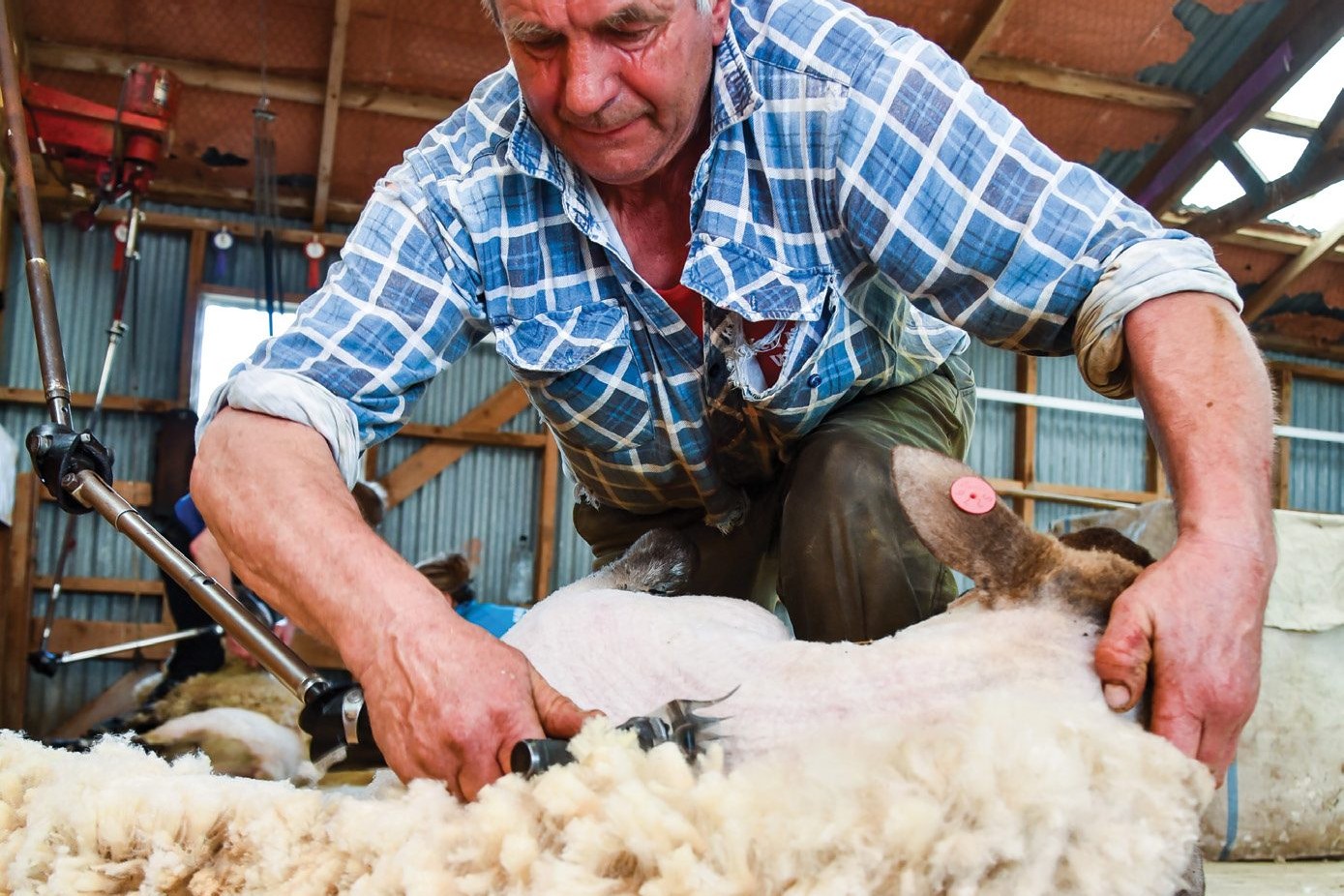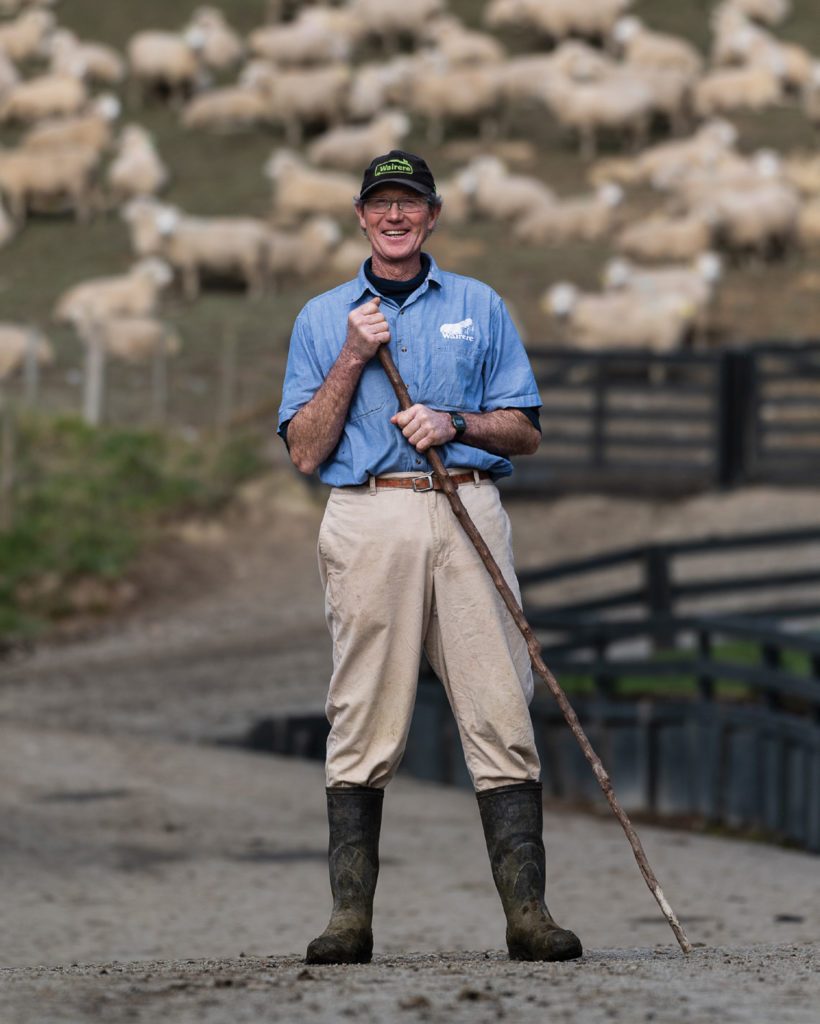Efficient and profitable sheep needed
With farming and overseas markets changing, Country-Wide asked industry people, what should the sheep of the future be?

With farming and overseas markets changing, Country-Wide asked industry people, what should the sheep of the future be?
South Otago ram breeder Garth Shaw says the first thing the sheep should be is profitable and to do that, they must perform. They must have good lamb survival and be high meat yielding.Their meat has to be of a high quality and healthy.
He and his wife Chris run Wharetoa Genetics and a commercial sheep operation.
Shaw says intramuscular fat is starting to be selected for which is likely to be in most breeds. It is a matter of identifying and multiplying it.
The lamb of the future will be 25-30kg carcaseweight because of the economics of processing.
“It’s criminal to kill at 17-18kg CW.”
Killing at that weight range is just wasting the lambs because they have so much potential to be bigger and profitable for little extra cost, he says. But there needs to be the genetics to make them grow bigger without going grossly overfat.
“It is not just about growing crops.”
The mean kill date is another important factor.
Finishers’ lamb growth rates are poor and they need to grow quicker for a faster turnaround.
He was told recently the biggest thing farmers can do to lower the carbon footprint is to finish the lambs quicker. Sheep also need to be easy-care and pleasant to work with.
“Easy-care doesn’t mean no care, you can’t get everything for nothing.”
Shaw says sheep will still need to be drenched and wool will make a comeback, but not to the levels it used to be. The main drivers will be meat and characteristics. Future sheep need to have the conformation for a consistent body condition score (BCS) of 3.5 to 4, year in, year out to withstand environmental variations.
Having Texel-type genetics in a ewe has helped maintain BCS and aid milk production.
Farmers should be mating at least 40% of their ewes to terminal rams, he says.
“Very few farmers do.”
By doing so they are aiding meat and growth characteristics in their works lambs.
With improved cultivars and nitrogen fertilisers, feed can be generated to carry into the winter and early spring. Farmers should be taking advantage of this and lambing more ewes earlier and killing when prices are high, Shaw says. That would allow farmers to buy in stock, perhaps ewes-all-counted, to capitalise on the spring growth before the summer dry.
Must survive without chemicals
Veterinarian and Country-Wide columnist Trevor Cook says it needs to be a sheep that can survive without chemicals because insecticides and anthelmintics are failing. It must be low-cost with little work like dagging and crutching needed.
“It’s more expensive than people realise.”
If wool has value it still has to be low-cost to produce. If it becomes high value then Cook says it warrants more attention but he doesn’t believe it will.
He says, tongue in cheek, of course sheep won’t be able to emit any methane so they can save the world.
Wairere business manager Simon Buckley says any ram breeder must produce rams that can sire high-performing modern sheep which remain structurally sound for at least five years. They also need to show a high level of reproductive performance and produce red meat customers are prepared to pay a high price for.

Buckley says stud managers need to understand how to get the most out of the data collected from their stud flocks.
Farming sheep that don’t need to be docked, dagged or drenched should be the target.
“It would be just like farming cattle!”
He feels there is scope to develop sheep that produce a high-quality fleece the market requires.
Sheep farming’s greatest non-political threat is the widespread appearance of internal parasites resistance to up to three anthelmintic active ingredients, he says.
Triple-active resistance is growing at an alarming rate so selecting sheep that can grow and thrive without a high level of anthelmintic intervention is vital.
Buckley says a new CARLA test that allows rapid onfarm diagnosis of counts could be a breakthrough for ram breeders because it makes selection cheaper and easier for the trait used for parasite resistance.
Marketers need to do their job
For sheep income to continue its rise in real value, Buckley says marketers have to convince consumers of the eating quality and safety, and environmental credentials of our sheepmeat.
There is a growing awareness of the impact of the intramuscular fat (IMF) trait on eating quality.
Buckley says it is easy to measure, test and improve it through genetic selection, and some processors are already rewarding farmers for it.
IMF is a relatively highly heritable trait and advances in technology are allowing assessment in live animals and more importantly, via genomics.
Buckley says genomics is probably the most exciting and potentially valuable technology in any ram breeder’s toolbox.
Recently LIC proclaimed that the use of genomics in dairy cattle is going to lead to much faster rates of genetic gain and will do much of the “heavy lifting” that is required to make the progress required.
“LIC has invested heavily in genomics and we need sheep breeders in NZ to do the same.”
A dual purpose ewe that will reliably raise two lambs is West Otago farmer Brian Howden’s vision for the sheep of the future.
Even better still would be a ewe with three tits to raise three lambs. He wouldn’t like to see too much change size-wise, believing ewes need to be at least 65kg to cope in bad weather.
AgResearch Scientist Kathryn McRae predicts the ideal sheep will be region-specific, bred according to particular health and prevailing weather challenges within specific parts of the country.
McRae, who has a special interest in genetic selection for improved health and welfare, is also predicting sheep with shorter tails and less wool on the belly and around the breech. These physical changes would avoid animal health issues such as flystrike, and meet consumer animal care and welfare expectations.
Depending on the fortunes of wool, self-shedding sheep could become more prevalent.

Look back to look forward
AgFirst farm consultant Peter Andrews says when looking forward it is best to first look back in history to see what has worked.
“What have been the triggers and drivers that have created this unbelievable transformation of our ewe flock to be the star performer out there in the paddock.”
Andrews says a breeding ewe is in a world of her own when it comes to efficiency. Off a winter weight of 70kg liveweight some our best ewes are generating 90kg of saleable product by Christmas. Self-fed as she wanders around the hills with no feeding of supplements.
“She is an unbelievable converter of grass to product.”
Increases in the lambing percentage will be important.
Wool has about six months to rebuild credibility with farmers otherwise it is gone, he says. There are credible and achievable alternatives.
“The top guys are having a very good look right now.”
Scottish farmer and Home block columnist John Scott says likely they will need to produce more from less, as the “forestry monster” creeps in every direction across hillsides. Land availability will become an issue.
Labour for bigger non-family units will continue to be a huge challenge. However, worldwide demand for high-quality red meat will ensure farmers are paid appropriately for their products.
“It will in turn let us incentivise those working in the industry.”




